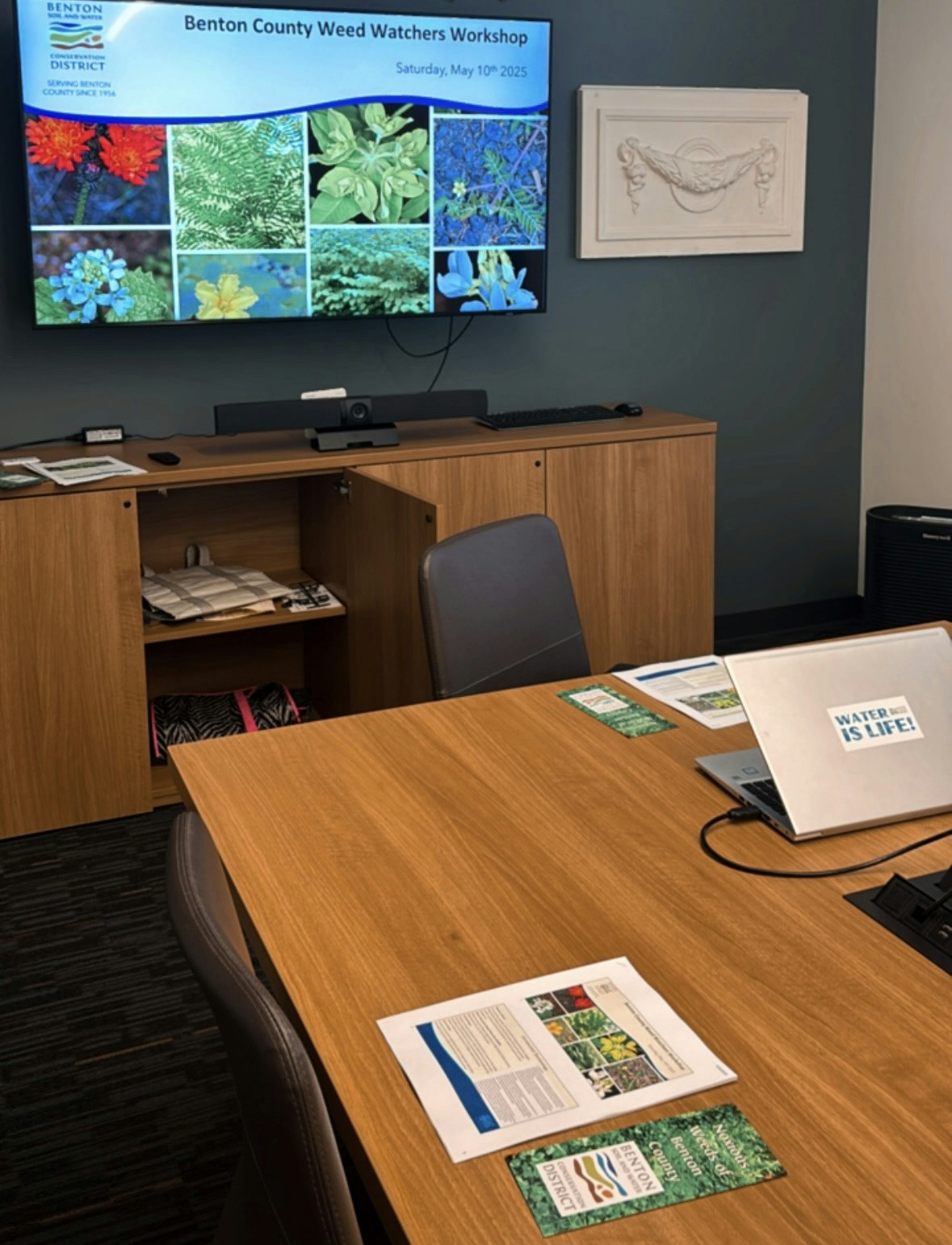The Dirt | An Early Detection and Rapid Response Success Story!
Last month on May 10th, I hosted a Weed Watchers Workshop at the Corvallis-Benton County Public Library. Twelve people attended the workshop, and together, we learned about 8 different noxious weed species and how they are classified by the Oregon Department of Agriculture. ODA also provided live specimens for participants to observe and interact with! One of the species I highlighted in my workshop is oblong spurge (Euphorbia oblongata), which is a species Benton SWCD currently has grant funding to remove from private land.




Shortly after the workshop on May 16th, I received a new report of oblong spurge in Corvallis from the Oregon Invasives Hotline. I immediately clicked on the report and noticed the name looked familiar because it was! The person who reported the plant had attended my workshop just days before. Thanks to that, they knew what oblong spurge looked like, its key defining characteristics, and most importantly, what to do about it. I was able to make contact with the homeowner that had the oblong spurge and they were more than happy to have the plant removed. They’ve even followed up by talking to their neighbors about the plant and referring them to Benton SWCD for assistance.
.JPG?ixlib=rb-1.1.0&w=2000&h=2000&fit=max&or=0&s=98d8a5a16300c3b04b3131d3273138fa)
.JPG?ixlib=rb-1.1.0&w=2000&h=2000&fit=max&or=0&s=cdad91064b37ad6157b6e41031d9b972)
.JPG?ixlib=rb-1.1.0&w=2000&h=2000&fit=max&or=0&s=1023bc75331c919c2ba2f9824e7f8f57)



.JPG?ixlib=rb-1.1.0&w=2000&h=2000&fit=max&or=0&s=98d8a5a16300c3b04b3131d3273138fa)
.JPG?ixlib=rb-1.1.0&w=2000&h=2000&fit=max&or=0&s=cdad91064b37ad6157b6e41031d9b972)
.JPG?ixlib=rb-1.1.0&w=2000&h=2000&fit=max&or=0&s=1023bc75331c919c2ba2f9824e7f8f57)



To me, this short story perfectly illustrates the importance of outreach and Early Detection and Rapid Response (EDRR) protocols. Change begins with having the foundational knowledge needed to make something happen. Go to free workshops/trainings if you haven’t before, learn new things, and when you see something, say something!
Thank you to the Oregon State Weed Board for providing grant funding for the Purge the Spurge project for the 4th year in a row, and thank you to the Oregon Department of Agriculture for providing technical assistance and outreach plant materials for the workshop!


.png?ixlib=rb-1.1.0&or=0&w=720&h=720&fit=max&auto=format%2Ccompress&s=4148dab409454500c34f8dd3830a6df2)